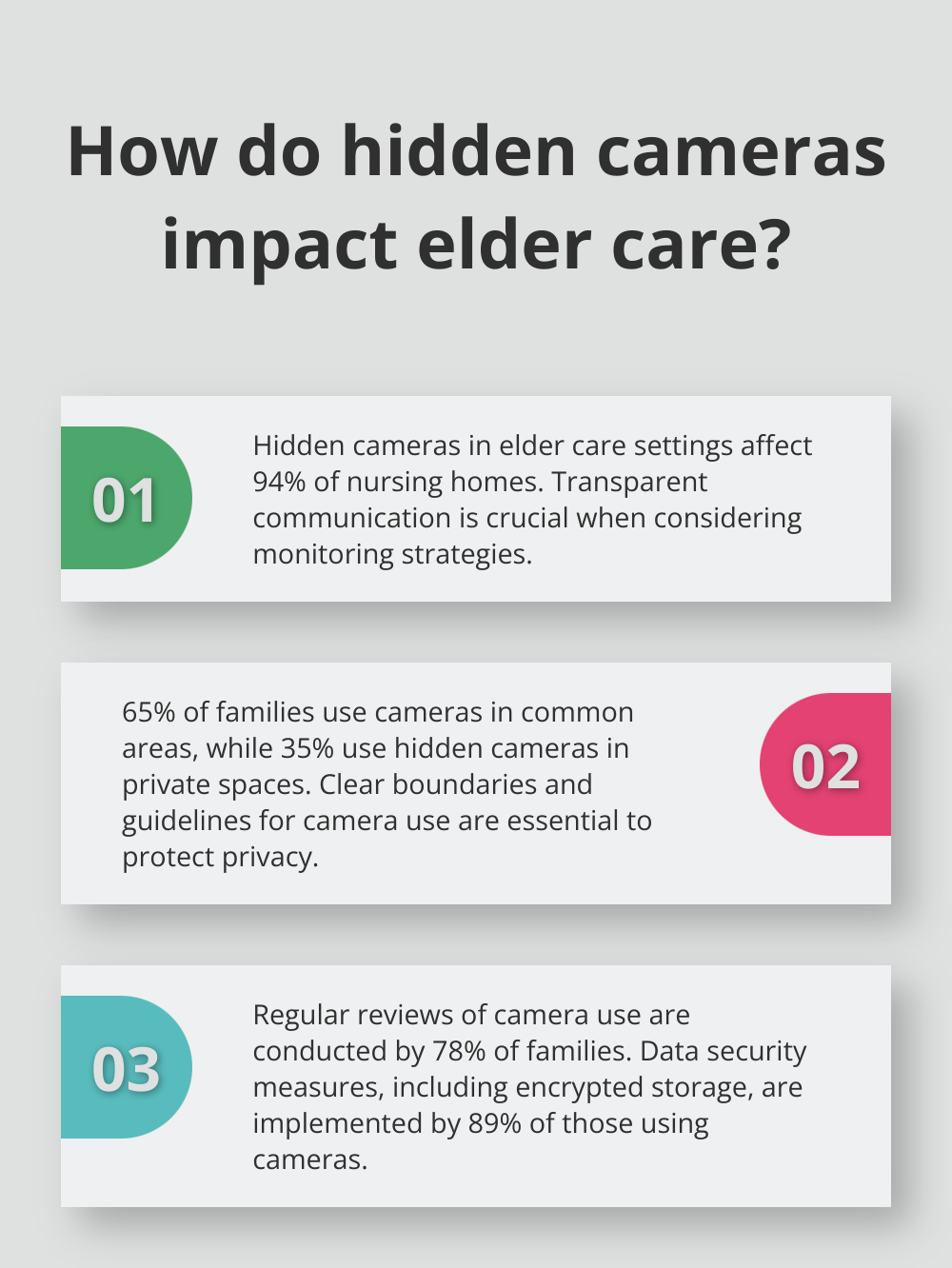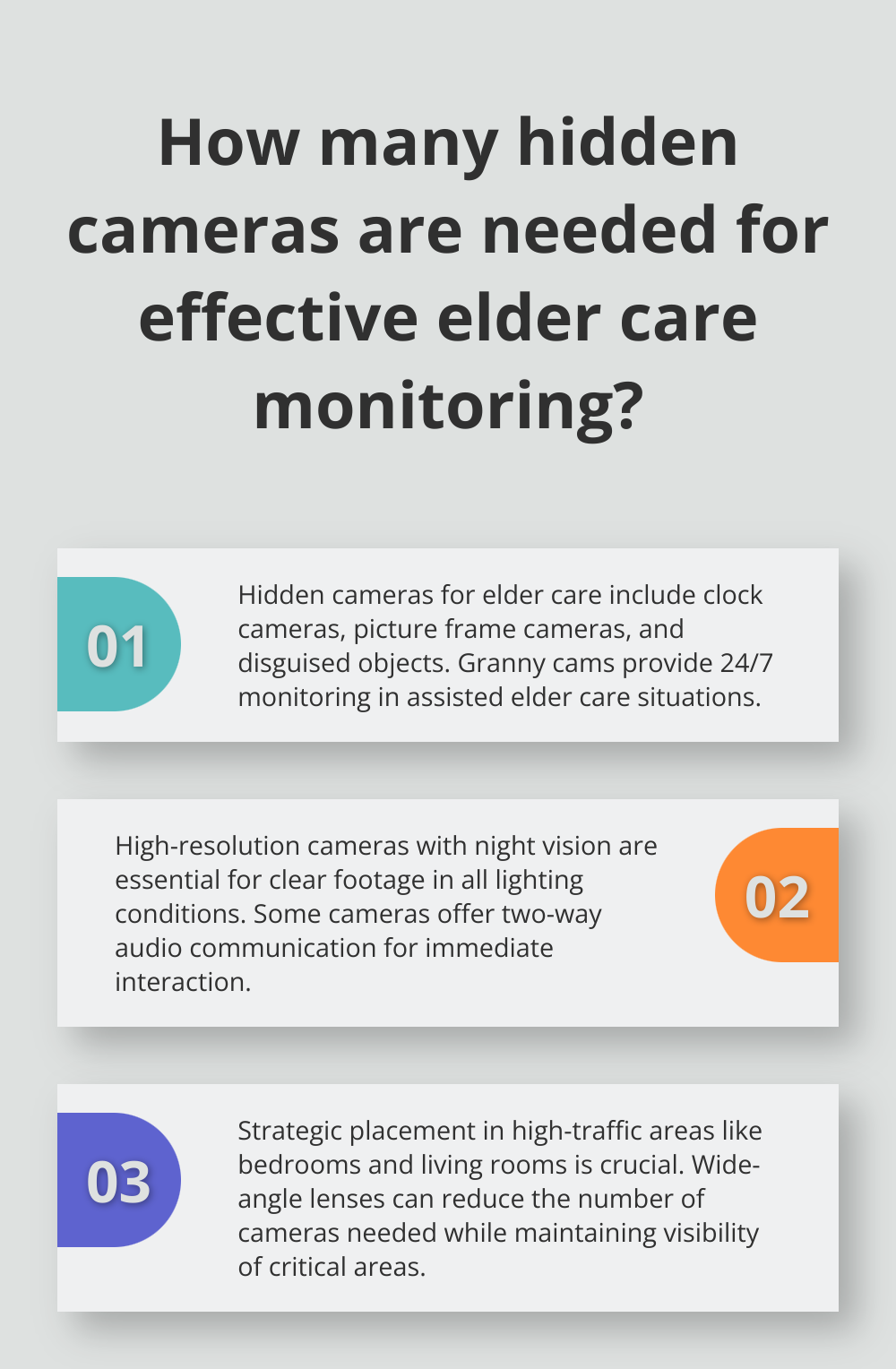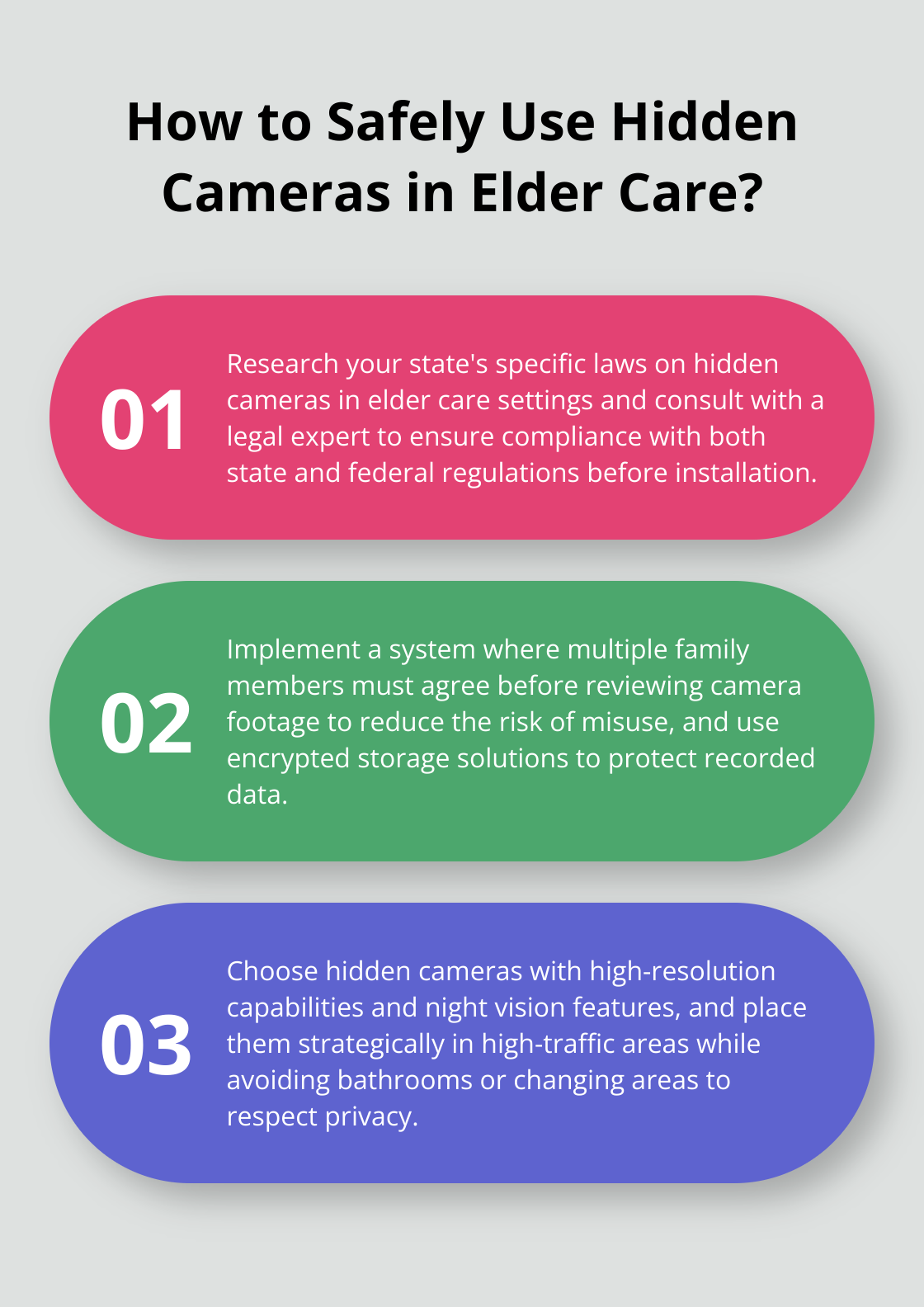Elite Warrior Defense
free shipping on orders over $25
We're having a 15% off sale on all our products. Enter your email below to be notified about future sales.

At Elite Warrior Defense LLC, we understand the complex challenges of caregiver monitoring for elderly loved ones. The use of hidden cameras in elderly care settings raises important ethical and legal questions.
This blog post explores responsible ways to implement surveillance while respecting privacy rights and maintaining trust. We’ll cover key considerations to help you navigate this sensitive issue effectively.
The legal framework for using hidden cameras in elder care differs across the United States. Texas law permits only the nursing home resident to request surveillance – unless the individual has been judicially declared to lack the required capacity. Illinois requires two-party consent for audio recordings. Research your state’s specific laws before installing any surveillance equipment.
The Health Insurance Portability and Accountability Act (HIPAA) protects patients’ medical information, which hidden cameras could potentially capture. Even if state law permits camera use, federal regulations might restrict how that footage can be used or shared. Consult with a legal expert to navigate these complex intersections of state and federal law.
Proper consent is non-negotiable when using hidden cameras in elder care settings. You’ll need consent from the elderly person being monitored or their legal guardian if they’re incapable of giving consent. If the camera might capture footage of caregivers or other residents, their consent may also be required. Some states mandate that facilities post notices about the presence of cameras (even if they’re hidden).
Illegal surveillance can lead to severe repercussions. Violators may face criminal charges, civil lawsuits, and hefty fines. In a recent case in Minnesota, a family faced legal action for installing a hidden camera without proper consent, resulting in a $10,000 fine. Moreover, courts typically deem evidence gathered through illegal surveillance inadmissible, potentially undermining efforts to protect your loved one from abuse or neglect.
When selecting hidden cameras for elder care monitoring, consider both legal compliance and effectiveness. Some states have specific requirements for the types of cameras allowed (e.g., video-only vs. audio-enabled). Elite Warrior Defense offers a range of hidden camera options that balance discreet monitoring with legal compliance. Always verify that your chosen equipment meets all applicable regulations before installation.

As we move into the ethical considerations of using hidden cameras in elder care, it’s important to remember that legal compliance is just the first step. The next section will explore how to balance safety concerns with privacy rights and maintain trust in caregiving relationships.
Transparent communication is crucial when considering monitoring strategies for elder care. There are personal, professional, ethical, and legal aspects to consider when deciding whether to use so-called “granny cams” to monitor the care seniors receive. Open dialogue forms the bedrock of ethical monitoring in elder care. Discuss your concerns with your elderly loved one and explain the reasons for considering camera installation. Involve them in the decision-making process when possible. This approach respects their autonomy and helps maintain trust.

For those with cognitive impairments, consult their medical team and legal guardian. Document these conversations to demonstrate your commitment to ethical practices.
Set specific guidelines for camera use. Determine which areas are off-limits (e.g., bathrooms or changing areas). Decide who will have access to the footage and under what circumstances. Consider implementing a system where multiple family members must agree before reviewing recordings, which reduces the risk of misuse.
While protecting your loved one is paramount, you must also respect caregiver privacy. Notify all care staff about the presence of cameras. This transparency can deter potential abuse while maintaining a positive work environment. Some families choose to use visible cameras in common areas and reserve hidden cameras for more private spaces.
Ethical monitoring requires ongoing attention. Schedule regular family meetings to discuss the continued use of cameras. Ask yourself: Are they still necessary? Has the situation changed? Be prepared to adjust your approach based on evolving needs and feedback from all stakeholders.
Protecting recorded footage is essential. Use encrypted storage solutions and limit access to authorized individuals only. If you’re using Wi-Fi-enabled cameras, ensure your network is secure to prevent unauthorized access. (Many reputable security companies offer cameras with advanced encryption features to safeguard your data.)
Hidden cameras shouldn’t be your only line of defense. Explore other options like increased family visits, hiring additional caregivers, or using wearable alert devices. These alternatives can complement camera use or potentially replace it in some situations.
The ethical implementation of monitoring systems in elder care requires a thoughtful, balanced approach. As we move forward, we’ll explore the practical aspects of choosing and placing hidden cameras responsibly to maximize their effectiveness while minimizing intrusion.
The market offers a wide array of hidden cameras, but not all suit elder care monitoring. Look for cameras that blend seamlessly into the environment. Common options include clock cameras, picture frame cameras, and cameras disguised as everyday objects (like air fresheners or smoke detectors).
Hidden cameras with long-lasting batteries can allow you to watch your loved ones in secret while they are in an assisted elder care situation. These “granny cams” can provide 24/7 monitoring to let you know what’s going on.

Video quality matters, especially in low-light conditions. Pick cameras with high-resolution capabilities and night vision features. This allows for clear footage regardless of the time of day or lighting conditions in the room.
Some hidden cameras offer two-way audio communication. This feature can prove invaluable, as it allows you to speak with your loved one or their caregiver if you notice anything concerning.
The effectiveness of your monitoring system depends on proper camera placement. Focus on high-traffic areas where most care activities occur (such as the bedroom, living room, or kitchen). However, always respect privacy by avoiding bathrooms or changing areas.
Consider the camera’s field of view when deciding on placement. Wide-angle lenses can capture more of the room, potentially reducing the number of cameras needed. However, ensure that critical areas, such as the bed or favorite sitting area, remain clearly visible.
Height and angle are important factors. Cameras placed too high might miss important details, while those placed too low could be easily obstructed. Try to find a middle ground that provides a clear view of the room without being obvious.
The key to effective hidden camera use is, of course, keeping them hidden. When you install, be mindful of wires and any telltale signs that might reveal the camera’s presence. If you use battery-powered cameras, plan for regular battery changes without drawing attention.
Consider the lighting in the room. Avoid placing cameras where glare from windows or lamps might interfere with the image quality. Similarly, ensure that the camera itself doesn’t create any unusual reflections that could give away its position.
If you use Wi-Fi-enabled cameras, secure your network to prevent unauthorized access. Change default passwords and use strong encryption. This protects both the privacy of your loved one and the integrity of your monitoring system.
While we’ve covered legal aspects earlier, it’s worth reiterating the importance of compliance. Ensure that your camera placement adheres to all applicable laws and regulations. This includes obtaining necessary consent and avoiding areas where there’s a reasonable expectation of privacy.
The goal is to protect and care for your loved one, not to invade privacy or create distrust. Use these tools responsibly and always prioritize open communication with all parties involved in the caregiving process.
The decision to use hidden cameras for caregiver monitoring requires careful consideration of legal, ethical, and practical aspects. Families must understand and comply with state and federal regulations, obtain proper consent, and respect privacy rights. Open communication with elderly family members, caregivers, and other stakeholders fosters trust and transparency in the monitoring process.

When implementing hidden cameras, families should select discreet, high-quality devices and position them strategically to maximize effectiveness while minimizing intrusion. Technology should complement, not replace, human interaction and oversight in caregiving situations. At Elite Warrior Defense LLC, we recognize the importance of safety and peace of mind in elderly care.
Our range of hidden camera options provides valuable tools for caregiver monitoring, allowing families to ensure the well-being of their relatives while respecting legal and ethical boundaries. The goal of any monitoring system should be to enhance the quality of care and safety for elderly individuals. Families can create a caregiving environment that protects their loved ones while preserving dignity and privacy through thoughtful and respectful practices.